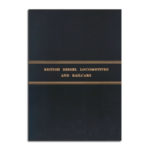Description
The English Electric Company Limited was a British industrial manufacturer formed after the end of the Great War in late 1918 It was created to make one of Britain’s three principal electrical manufacturing concerns by amalgamating five businesses which, during the war, had been making munitions armaments and aeroplanes. The intention of “beating swords into p lough-shares” was tosome extent thwarted by the slump which followed the initial peace-time boomso while the heavy engineering side languished until orders for modern power generating plant began to arrive, the production of smaller items of electrical equipment including industrial electric motors and transformers, railway locomotives and traction equipment, diesel motors and steam turbines. In the end its activities expanded to include domestic appliances nuclear reactors, guided missiles, military aircraft and mainframe computers.
During its 50 years of independence, English Electric absorbed engine makers David Napier and Son (founded 1808) The Marconi Company (1897) in 1948,The Vulcan Foundry (1832, As Charles Tayleur, and Co.) in 1955 and Robert Stephenson and Hawthorns Ltd. (1938 but incorporating Robert Stephenson and Co. of 1823), also in 1958.
English Electric’s operations were merged with GEC in 1968, the combined business employing more than 250,000 people. Until then it had been one of Britain´s “Blue Chip” companies like ICI, Camel Laird, Rolls Royce, Vickers Armstrong, etc., most of which have vanished in foreign mergers and take oversas part of Globalisation.
It is worth spending a few moments to consider the iconic “Deltic” Locomotive. In1946/7 the LNER formulated a proposal for 22 high powered diesel-electric locomotives to replace “Pacifics” on Anglo-Scottish services. Under nationalisation, the proposal was put forward by Eastern, North Eastern and Scottish Regions for a similar scheme to the Railway Executive. There was at the time no suitable prototype available The LMS “TWINS” were not powerful enough and were up to the limit so far as axle loadings were concerned, andlighter weight diesel engines and generators were required to fit within the British loading gauge. The Railway Executive member for mechanical engineering, R.A.Riddles had no time for diesel traction (other than shunters) and dismissed the proposal out of hand. His objective was to equip BR with a fleet of “standard” steam locomotives with a life of 30 years, by which time Britain would be able to afford the cost of electrifying the bulk of the network. If not, then it would be someone else’s problem, not Riddle’s. A great opportunity was lost, and several years and millions wasted, before the private sector solved the problem. In fact the initial breakthrough was made in Germany where the aircraft manufacturer Junkers developed the Jumo 204 Diesel aeroplane engine, an opposed-piston two-stroke design. Instead of each cylinder having a single piston and being closed at one end with a cylinder head, the Jumo design used an elongated cylinder containing two pistons moving in opposite directions towards the centre. This negated the need for a heavy cylinder head, the opposing piston filled this role. On the downside, the layout required separate crankshafts on each end of the engine that must be coupled through gears. Before the war, Napier had been working on an aviation Diesel design known as the Culverin after licensing versions of the Jumo 204.The Admralty had a requirement for a comparatively light weight diesel engine to power motor torpedo boats, British ones being petrol fueled were much more vulnerable than the equivalent German craft and slower than the E Boats. The Admiralty required a much more powerful engine, and knew about Junkers’ designs for multi-crankshaft engines of straight six and diamond-form and felt that these would be a reasonable starting point for the larger design which it required. The result was a triangle, the cylinder banks forming the sides, and tipped by three crankshafts one at each apex. These shafts were connected withphased gearing to a single output shaft. Sounds simple, but a cut away model of a Deltic engine reveals gear trains of mind boggling complexity. The Admiralty placed a contract with English Electric, who as related earlier had taken over Napier, and the rest as they say is history. It was an act of genius to place two of these immensely powerful engines in a locomotive, driving generators to power traction motors. The resulting machine was for a time the most powerful single diesel electric unit in the world. It took nearly ten years of development to reach this stage, all at the financial risk of English Electric. While the former Napier works built the engines, the prototype locomotive was assembled at the former Dick Kerr works at Preston. But who on earth decided to turnout the prototype in a livery which would not have looked out of place on a fairground dodgem car? Compared to the dignified austere black and silver of the LMS Twins 10000 and 10001, it looked rather silly.
As Public Relations Officer of the former Eastern Region, I played a minor role in the later part of the Deltic story. On 27 February 1982 I arranged a brief handover ceremony at York station, when D9002 The King’s Own Yorkshire Light Infantry was donated to the National Railway Museum, where it is preserved in working order. The Friends of the National Railway Museum paid for restoration of the original two tone green service livery. The lighter green was chosen by design consultants “to disguise the bulk of the locomotive”. Why? The Deltic was a large powerful brute of a machine, why try to pretend otherwise?
I wonder how many people nowadays appreciate the coincidence of the initial letters KOYLI and the name of the then Keeper of the National Railway Museum, the late Dr. John Coiley, a true gentleman whom I met on his first day occupying a Portakabin on the Museum site, and had the pleasure of a friendly working relationship over many years?
PREVIEW BELOW – MAY TAKE A WHILE TO LOAD.



Reviews
There are no reviews yet.